Sub-Saharan Africa

Ethiopia
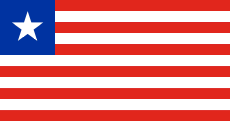
Liberia
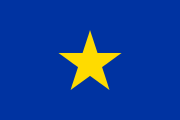
Congo

Zanzibar
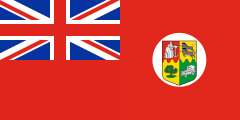
South Africa
Middle East and North Africa
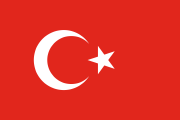
Turkey
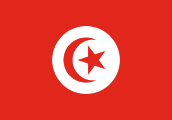
Tunisia
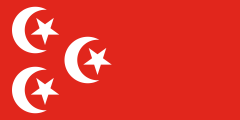
Egypt

Jebel Shammar

Morocco 11 Flown over the palace in Rabat and on ships. Military flags on land were often dectorated with a yellow or green octagram.

Muscat and Oman
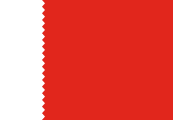
Bahrain 22 The number of points could vary. Some flags even had a completely straight-edged stripe.

Ras al-Khaimah · Sharjah 33 Officially all of the Trucial States were supposed to fly a square red flag with a thick white border. In practice this flag became exclusively associated with the Al Qasimi dynasty. The other states mostly flew plain red flags.

Persia
state flag 44 Flown by the government, and often by private citizens.
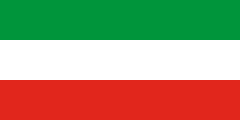
Persia
national flag 55 Allowed to be flown by anyone.
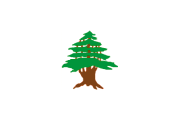
Mount Lebanon

Nejd
Western Europe
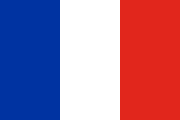
France
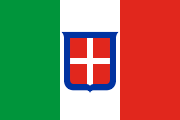
Italy
national flag 66 Flown by private citizens and merchant ships. The "Italian Social Republic", the Nazi puppet regime in the north, flew the plain tricolour as a national flag and had a war flag with an eagle gripping a fasces. The anti-fascist Italian partisans flew either plain tricolours or tricolours with a white or red star on the middle stripe.
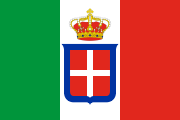
Italy
state flag 77 Flown by the government and navy.
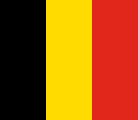
Belgium
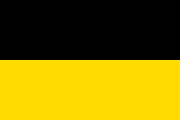
Austria
Imperial colours 88 The dynastic colours of the Hapsburg monarchy, often used as a flag on land.
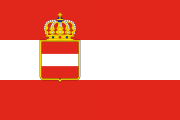
Austria
naval flag 99 Flown by navy ships. Direct predecessor of the modern Austrian flag.
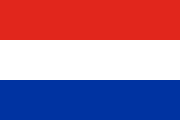
Netherlands
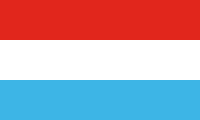
Luxembourg
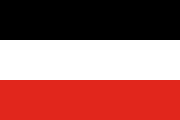
Germany
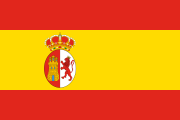
Spain

Andorra

Switzerland
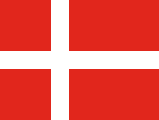
Denmark
national flag 1010 Allowed to be flown by anyone.

Denmark
sovereign flag 1111 Flown by the royal house, the government, and the armed forces. Also granted to a select list of private institutions and companies.
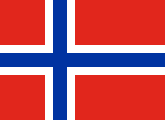
Norway
merchant flag 1212 Allowed to be flown by anyone.
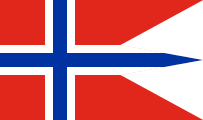
Norway
state flag 1313 Flown only on state-owned buildings and naval ships.
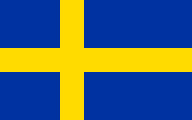
Sweden 1414 Flown for all purposes. A three-tailed version of the national flag is flown by the military.
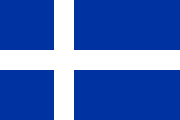
Iceland
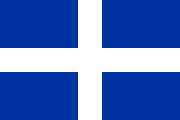
Greece
land flag 1515 Flown on land within Greece. The military flag had a crown in the centre of the cross.

Greece
sea flag 1616 Flown at sea and abroad. The naval ensign had a crown in the centre of the cross.
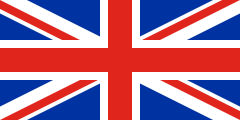
United Kingdom
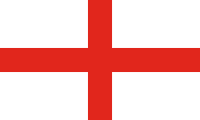
England
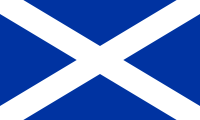
Scotland

Jersey
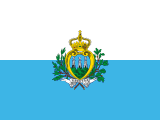
San Marino
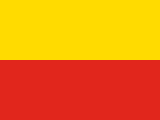
Liechtenstein
princely flag 1717 Flown by the prince, and unofficially as a national flag. Blue and red flags were also in use.
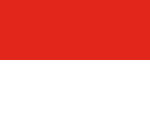
Monaco
national flag 1818 Allowed to be flown by anyone.
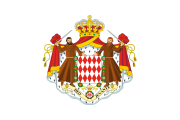
Monaco
princely flag 1919 Flown over the Prince's Palace and government buildings.

Malta
traditional flag 2020 Flown unofficially, mostly by civilian ships. There was also a blue colonial ensign with the Maltese coat of arms on it.

Portugal

Catalonia
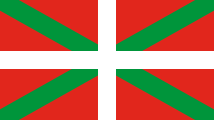
Basque Country
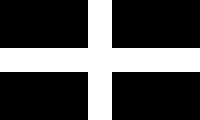
Cornwall

Galicia
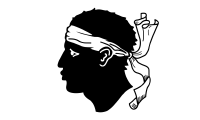
Corsica
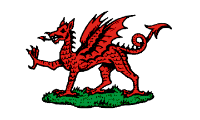
Wales
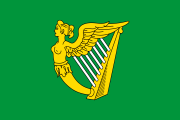
Ireland
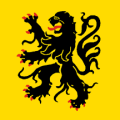
Flanders
Eastern Europe

Russia
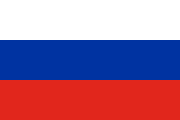
Carniola
national colours 2121 Designated as the official colours of the Austrian crown land of Carniola. Regarded as the unofficial national flag of Slovenia.
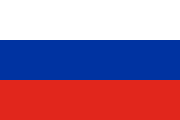
Slovakia 2222 Flown by advocates of Slovakian independence. The "Upper Hungary" region did not have an official flag.

Croatia and Slavonia

Serbia
national flag 2323 Allowed to be flown by anyone.

Serbia
state flag 2424 Flown the government and armed forces.
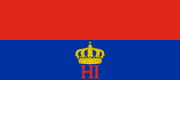
Montenegro
merchant flag 2525 Flown by the merchant fleet. The plain Serbian tricolour was also widely flown within in the country.
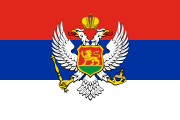
Montenegro
royal flag 2626 Flown by the king and the government.

Hungary

Bulgaria

Estonia
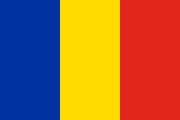
Romania
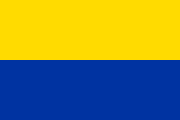
Ukraine 2727 Flown by Ukrainian nationalists. The order of colours wasn't fixed.
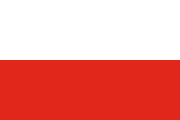
Bohemia
state colours 2828 Designated as the official colours of the Austrian crown land of Bohemia. Not an official flag, but informally regarded as a Czech national symbol. A white flag with the Bohemian coat of arms was also sometimes used.

Bosnia and Herzegovina

Poland
banner 2929 The former royal banner of Poland, no longer official but still used as an informal national symbol.

Albania
South Asia and the Indian Ocean
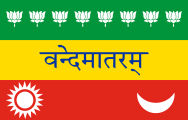
India 3030 The "Calcutta flag" flown by independence activists. British India had several colonial flags. A red civil ensign with the Star of India medal on it was used to represent India at international sporting events.
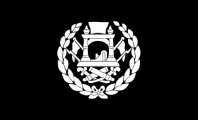
Afghanistan
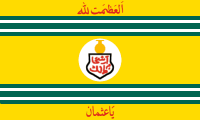
Hyderabad

Jammu and Kashmir 3131 The maharaja's flag had yellow stripes at the top and bottom.

Nepal
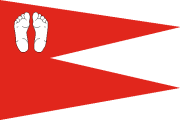
Jhabua 3232 The raja's flag was rectangular

Dewas
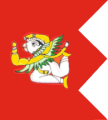
Kota
princely flag 3333 Flown by the Maharao and also used as a state flag. The flag was sometimes much longer.

Benares
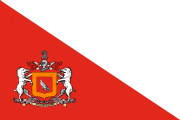
Sailana 3434 The previous plain red flag was sometimes flown as an alternate state flag.
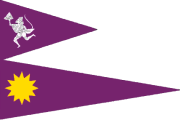
Ajaigarh 3535 The reverse side of the flag showed a moon and a flower.

Mewar 3636 Mewar had a number of reported princely banners which were also sometimes used as state flags. The most common one had a large yellow sun and a blue katar dagger.

Kolhapur 3737 Kolhapur flew the Maratha saffron banner as a state flag. The maharaja had a diagonally-divided red and orange flag.

Dhar
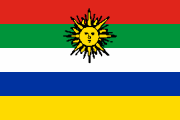
Jaipur
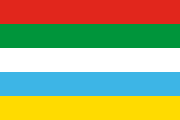
Alwar
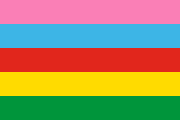
Idar
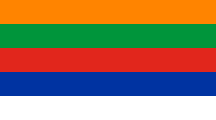
Sirohi
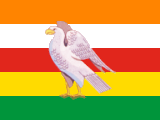
Jodhpur
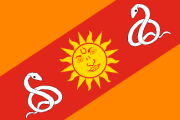
Gwalior
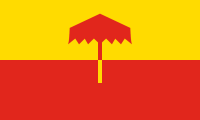
Jaisalmer

Nabha

Bikaner
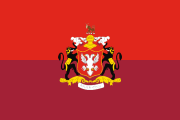
Mysore

Wankaner
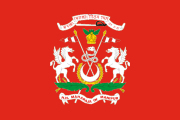
Manipur

Charkhari

Banswara
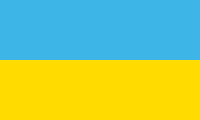
Dholpur

Chhatarpur

Kapurthala
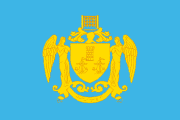
Cambay
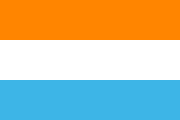
Bharatpur
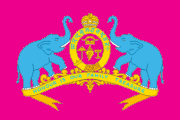
Kochin
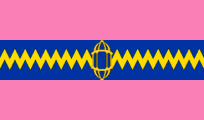
Dhrangadhra

Rajpipla
princely flag 3838 Flown by the maharaja and often used as a state flag.

Rajpipla
national flag 3939 Allowed to be flown by civilians.

Indore 4040 Inland river boats flew a triangular pennant in the same colours.

Bhavnagar 4141 There was also a red British colonial ensign with the coat of arms on it.
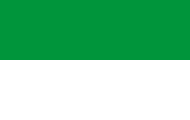
Tonk 4242 The nawab's flag, which was sometimes used as an alternate state flag, was white with a green hand.
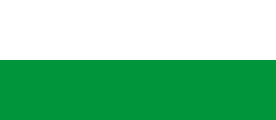
Garhwal 4343 The maharaja's flag had a gold eagle on it. The armed forces used a flag with white and purple stripes.
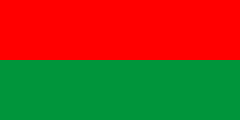
Suket 4444 The raja's flag had a gold tiger head in the middle. The war flag was a red flag with the state coat of arms on it.

Kalat
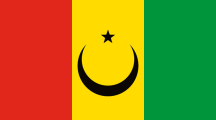
Bahawalpur

Baroda
princely flag 4545 Flown by the maharaja and often used as a state flag. The swallowtailed saffron Maratha banner was also sometimes flown.
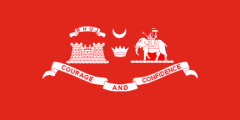
Kutch

Travancore

Rajgarh

Pratapgarh 4646 The maharawat's flag had the same design but in yellow instead of white.

Cooch Behar
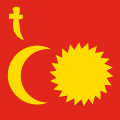
Barwani
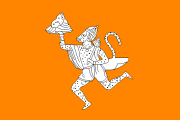
Porbandar
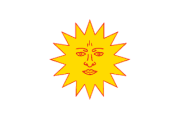
Sitamau 4747 The Raja's flag had a red sun

Faridkot
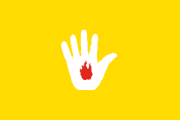
Rewa
princely flag 4848 Flag of the maharaja's dynasty, used as a state flag.

Bundi

Jhalawar

Karauli
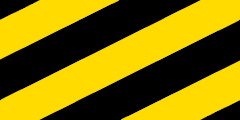
Orchha
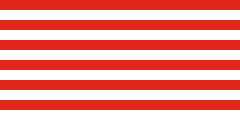
Alirajpur

Khairpur
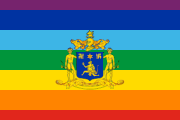
Dungarpur

Baoni

Mandi 4949 The flag flown at the palace had the state coat of arms on it.

Kishangarh
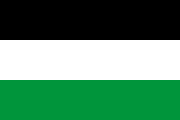
Bhopal 5050 The begum's standard had a crown and inscription on it.
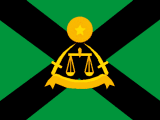
Jaora
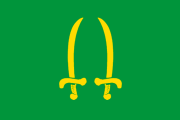
Rampur

Bilaspur

Sikkim
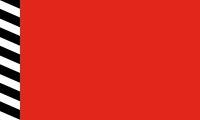
Maldive Islands
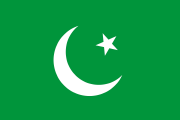
Muslim League 5151 Flag of the All-India Muslim League, which advocated for Muslim interests within British India. The direct predecessor of the flag of Pakistan.
East, Central and Southeast Asia

Japan

Korea 5252 Flown by the Korean independence movement. Banned under Japanese occupation.

China

Mongolia

Cambodia
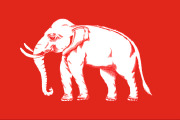
Siam
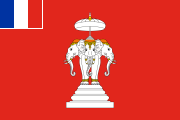
Laos
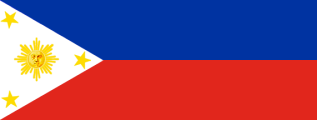
Philippines 5353 Banned by the American colonial government. The Insular Government of the Philippine Islands had no official flag at this time.
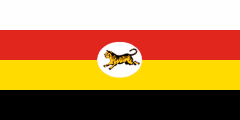
Federated Malay States
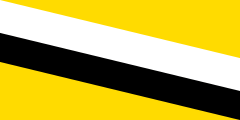
Brunei

Terengganu

Sarawak

Perlis

Johor
state flag 5454 Flown by the sultan and on naval ships.

Johor
merchant flag 5555 Flown by merchant ships and sometimes used by civilians as an alternate national flag.
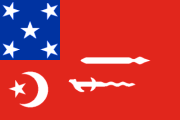
Moro 5656 A typical example of a Moro battle flag. No two were exactly alike, but they all looked roughly like this. Sometimes the daggers were crossed, or the crescent and star was replaced by a white and blue emblem.

Kedah
state flag 5757 Flown over the sultan's palace and the military.
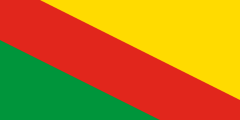
Kedah
merchant flag 5858 Flown by merchant ships.
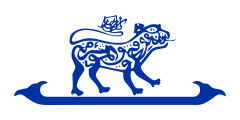
Kelantan
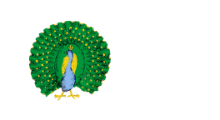
Burma 5959 Flown by Burmese nationalists. The British colonial government did not have a distinct flag.
Oceania

Australia

New Zealand

Hawaiʻi

Tonga
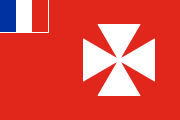
Wallis and Futuna
North America
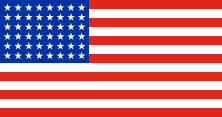
United States

Canada 6060 Officially only to be flown civilian ships, but in practice flown widely on land as the national flag. The badge was only supposed to have the arms of the original four provinces, but the nine-province version was much more common. It was also often placed on a white disc, or adorned with wreath of maple leaves and a crown.

Newfoundland 6161 Officially only to be flown civilian ships, but in practice flown widely on land as the national flag.
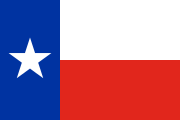
Texas
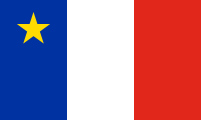
Acadia
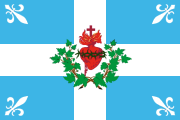
Québec
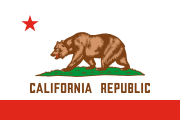
California
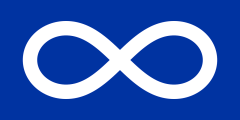
Métis
Latin America
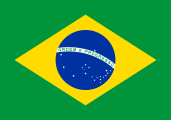
Brazil

Mexico
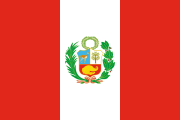
Peru
national ensign 6262 Flown by the government, the navy, the national police, and national sports teams. Raised at major ceremonies. The army uses a similar flag with a different coat of arms.
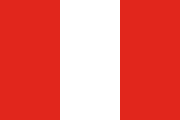
Peru
national flag 6363 Allowed to be flown by anyone.

Guatemala
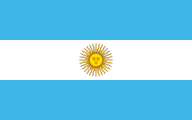
Argentina
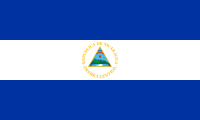
Nicaragua

El Salvador
national flag 6464 The most common flag, flown over most government buildings, at ceremonies, by diplomatic missions and often by public citizens.
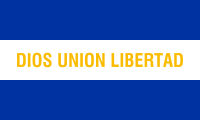
El Salvador
inscribed flag 6565 An alternative government flag, most commonly flown by the armed forces but also on some public buildings and offices.

El Salvador
plain flag 6666 The simplest version of the national flag, flown by some private citizens.
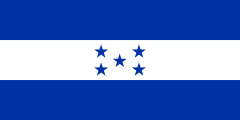
Honduras

Paraguay
front side
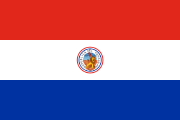
Paraguay
back side
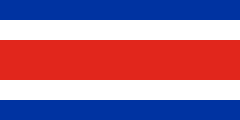
Costa Rica
national flag 6767 The most common Costa Rican flag. Officially designated for private citizens, but in practice often used on government buildings and schools too.
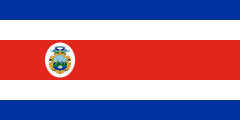
Costa Rica
national ensign 6868 Flown by the government and by diplomatic missions, although also used sometimes by private citizens.
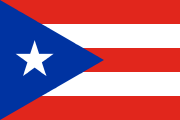
Puerto Rico 6969 Flown by Puerto Rican nationalists. Display of the flag was initially banned under American rule.

Cuba

Uruguay
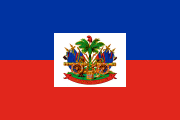
Haiti
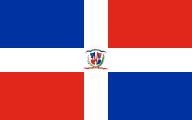
Dominican Republic
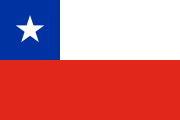
Chile
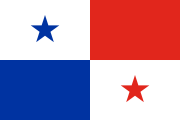
Panama
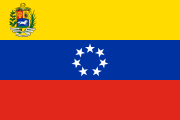
Venezuela
national ensign 7070 Flown by the government and armed forces, and unofficially used by many private citizens.

Venezuela
national flag 7171 Allowed to be flown by anyone.
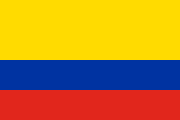
Colombia
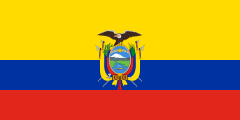
Ecuador
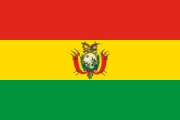
Bolivia
state flag 7272 Flown by the governmnent. The armed forces flew a similar flag with olive and laurel branches around the coat of arms.
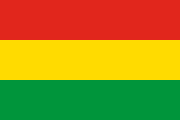
Bolivia
national flag 7373 Allowed to be flown by anyone.
Other International and Cultural Flags
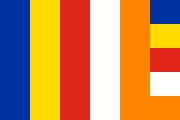
Buddhist Flag
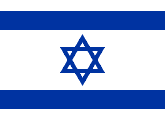
Zionist Movement

Arab Nationalist Flag

Esperanto

Red Cross
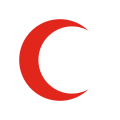
Red Crescent
Events of 1912
ALBANIA • Albania declared independence from the Ottoman Empire on November 28. It flew the two-headed black eagle flag which had been flown by Albanian nationalists since the late 19th century, and which had its origins with the banner of the 15th century Albanian national hero, Skanderbeg. The specifics of the design were in flux until 1920.

CHINA • The Republic of China was proclaimed on January 1, and on January 10 it adopted the "Five Races Under One Union" flag. The five stripes on the flag represented, from top to bottom, Han Chinese, Manchus, Mongols, Hui, and Tibetans. Emperor Puyi abdicated on February 12, formally bringing the Qing Dynasty to an end.



EL SALVADOR • El Salvador adopted a Central American style flag on May 17. The new design had three variations: A state flag with a coat of arms, a secondary state flag with the motto "DIOS UNION LIBERTAD" on it, and a plain civil flag.
After this point, the name "El Salvador" (República de El Salvador) supplanted "Salvador" (República del Salvador) on all national symbols. The change was confirmed in 1915.
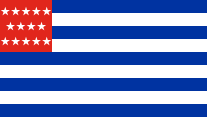




FUTA JALLON • The Imamate of Futa Jallon was extinguished by the French authorities in 1912.



JHALAWAR • The flag of the Indian princely state of Jhalawar was known to be in use as of 1912.

MALAYA • A number of the former Siamese tributaries in northern Malaya adopted new flags in 1912. In Kelantan and Terengganu, where the only flags had been the plain white banners of the Sultans, proper state flags were adopted for the first time this year. Kelantan's showed an elaborate calligraphic tiger, while Terengganu's had simple white and black stripes representing the Sultan and the people.




Kedah replaced the tiger on its state flag with a coat of arms on January 10. It also adopted a civil flag with diagonal stripes on August 11.
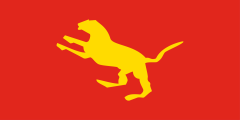



SAMOS • The Principality of Samos declared its union with Greece on November 24.
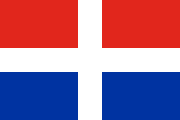


SOUTH AFRICA • The badge was placed on a white disc on March 25.
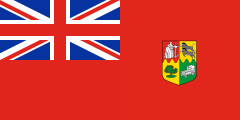


TRIPOLI • The Ottoman territory of Tripolitania was ceded to the Italians on October 18.
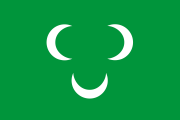


UNITED STATES • Two more stars (for Arizona and New Mexico) were added to the flag on July 4. The 48-star flag would remain in use for the next 47 years, and it was the longest-lived version of the American flag until the current 50 star version surpassed it in 2007.
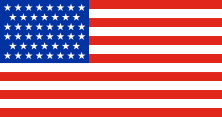


Notes
1 Flown over the palace in Rabat and on ships. Military flags on land were often dectorated with a yellow or green octagram. ↩
2 The number of points could vary. Some flags even had a completely straight-edged stripe. ↩
3 Officially all of the Trucial States were supposed to fly a square red flag with a thick white border. In practice this flag became exclusively associated with the Al Qasimi dynasty. The other states mostly flew plain red flags. ↩
4 Flown by the government, and often by private citizens. ↩
5 Allowed to be flown by anyone. ↩
6 Flown by private citizens and merchant ships. The "Italian Social Republic", the Nazi puppet regime in the north, flew the plain tricolour as a national flag and had a war flag with an eagle gripping a fasces. The anti-fascist Italian partisans flew either plain tricolours or tricolours with a white or red star on the middle stripe. ↩
7 Flown by the government and navy. ↩
8 The dynastic colours of the Hapsburg monarchy, often used as a flag on land. ↩
9 Flown by navy ships. Direct predecessor of the modern Austrian flag. ↩
10 Allowed to be flown by anyone. ↩
11 Flown by the royal house, the government, and the armed forces. Also granted to a select list of private institutions and companies. ↩
12 Allowed to be flown by anyone. ↩
13 Flown only on state-owned buildings and naval ships. ↩
14 Flown for all purposes. A three-tailed version of the national flag is flown by the military. ↩
15 Flown on land within Greece. The military flag had a crown in the centre of the cross. ↩
16 Flown at sea and abroad. The naval ensign had a crown in the centre of the cross. ↩
17 Flown by the prince, and unofficially as a national flag. Blue and red flags were also in use. ↩
18 Allowed to be flown by anyone. ↩
19 Flown over the Prince's Palace and government buildings. ↩
20 Flown unofficially, mostly by civilian ships. There was also a blue colonial ensign with the Maltese coat of arms on it. ↩
21 Designated as the official colours of the Austrian crown land of Carniola. Regarded as the unofficial national flag of Slovenia. ↩
22 Flown by advocates of Slovakian independence. The "Upper Hungary" region did not have an official flag. ↩
23 Allowed to be flown by anyone. ↩
24 Flown the government and armed forces. ↩
25 Flown by the merchant fleet. The plain Serbian tricolour was also widely flown within in the country. ↩
26 Flown by the king and the government. ↩
27 Flown by Ukrainian nationalists. The order of colours wasn't fixed. ↩
28 Designated as the official colours of the Austrian crown land of Bohemia. Not an official flag, but informally regarded as a Czech national symbol. A white flag with the Bohemian coat of arms was also sometimes used. ↩
29 The former royal banner of Poland, no longer official but still used as an informal national symbol. ↩
30 The "Calcutta flag" flown by independence activists. British India had several colonial flags. A red civil ensign with the Star of India medal on it was used to represent India at international sporting events. ↩
31 The maharaja's flag had yellow stripes at the top and bottom. ↩
32 The raja's flag was rectangular ↩
33 Flown by the Maharao and also used as a state flag. The flag was sometimes much longer. ↩
34 The previous plain red flag was sometimes flown as an alternate state flag. ↩
35 The reverse side of the flag showed a moon and a flower. ↩
36 Mewar had a number of reported princely banners which were also sometimes used as state flags. The most common one had a large yellow sun and a blue katar dagger. ↩
37 Kolhapur flew the Maratha saffron banner as a state flag. The maharaja had a diagonally-divided red and orange flag. ↩
38 Flown by the maharaja and often used as a state flag. ↩
39 Allowed to be flown by civilians. ↩
40 Inland river boats flew a triangular pennant in the same colours. ↩
41 There was also a red British colonial ensign with the coat of arms on it. ↩
42 The nawab's flag, which was sometimes used as an alternate state flag, was white with a green hand. ↩
43 The maharaja's flag had a gold eagle on it. The armed forces used a flag with white and purple stripes. ↩
44 The raja's flag had a gold tiger head in the middle. The war flag was a red flag with the state coat of arms on it. ↩
45 Flown by the maharaja and often used as a state flag. The swallowtailed saffron Maratha banner was also sometimes flown. ↩
46 The maharawat's flag had the same design but in yellow instead of white. ↩
47 The Raja's flag had a red sun ↩
48 Flag of the maharaja's dynasty, used as a state flag. ↩
49 The flag flown at the palace had the state coat of arms on it. ↩
50 The begum's standard had a crown and inscription on it. ↩
51 Flag of the All-India Muslim League, which advocated for Muslim interests within British India. The direct predecessor of the flag of Pakistan. ↩
52 Flown by the Korean independence movement. Banned under Japanese occupation. ↩
53 Banned by the American colonial government. The Insular Government of the Philippine Islands had no official flag at this time. ↩
54 Flown by the sultan and on naval ships. ↩
55 Flown by merchant ships and sometimes used by civilians as an alternate national flag. ↩
56 A typical example of a Moro battle flag. No two were exactly alike, but they all looked roughly like this. Sometimes the daggers were crossed, or the crescent and star was replaced by a white and blue emblem. ↩
57 Flown over the sultan's palace and the military. ↩
58 Flown by merchant ships. ↩
59 Flown by Burmese nationalists. The British colonial government did not have a distinct flag. ↩
60 Officially only to be flown civilian ships, but in practice flown widely on land as the national flag. The badge was only supposed to have the arms of the original four provinces, but the nine-province version was much more common. It was also often placed on a white disc, or adorned with wreath of maple leaves and a crown. ↩
61 Officially only to be flown civilian ships, but in practice flown widely on land as the national flag. ↩
62 Flown by the government, the navy, the national police, and national sports teams. Raised at major ceremonies. The army uses a similar flag with a different coat of arms. ↩
63 Allowed to be flown by anyone. ↩
64 The most common flag, flown over most government buildings, at ceremonies, by diplomatic missions and often by public citizens. ↩
65 An alternative government flag, most commonly flown by the armed forces but also on some public buildings and offices. ↩
66 The simplest version of the national flag, flown by some private citizens. ↩
67 The most common Costa Rican flag. Officially designated for private citizens, but in practice often used on government buildings and schools too. ↩
68 Flown by the government and by diplomatic missions, although also used sometimes by private citizens. ↩
69 Flown by Puerto Rican nationalists. Display of the flag was initially banned under American rule. ↩
70 Flown by the government and armed forces, and unofficially used by many private citizens. ↩
71 Allowed to be flown by anyone. ↩
72 Flown by the governmnent. The armed forces flew a similar flag with olive and laurel branches around the coat of arms. ↩
73 Allowed to be flown by anyone. ↩